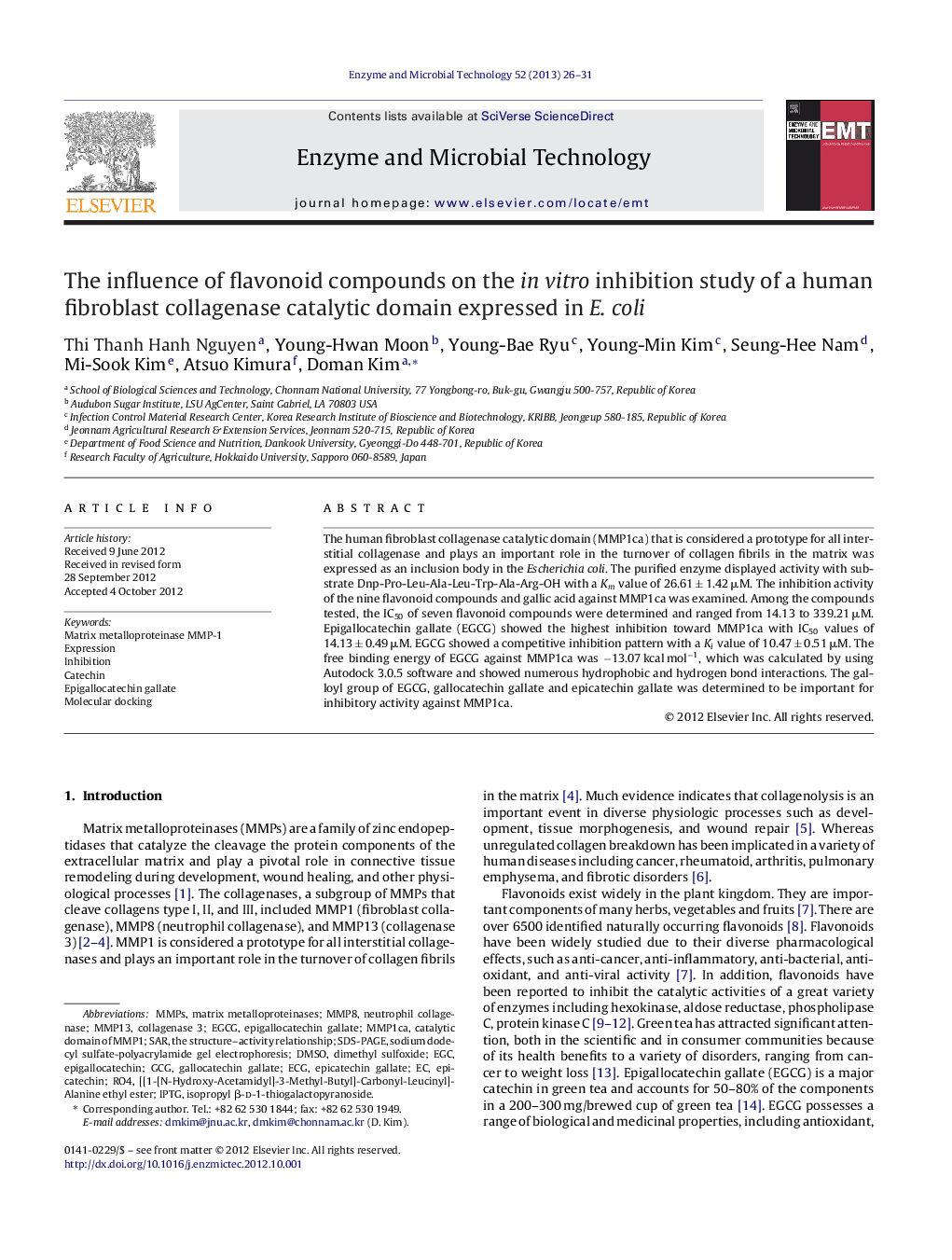| Article ID | Journal | Published Year | Pages | File Type |
|---|---|---|---|---|
| 17152 | Enzyme and Microbial Technology | 2013 | 6 Pages |
The human fibroblast collagenase catalytic domain (MMP1ca) that is considered a prototype for all interstitial collagenase and plays an important role in the turnover of collagen fibrils in the matrix was expressed as an inclusion body in the Escherichia coli. The purified enzyme displayed activity with substrate Dnp-Pro-Leu-Ala-Leu-Trp-Ala-Arg-OH with a Km value of 26.61 ± 1.42 μM. The inhibition activity of the nine flavonoid compounds and gallic acid against MMP1ca was examined. Among the compounds tested, the IC50 of seven flavonoid compounds were determined and ranged from 14.13 to 339.21 μM. Epigallocatechin gallate (EGCG) showed the highest inhibition toward MMP1ca with IC50 values of 14.13 ± 0.49 μM. EGCG showed a competitive inhibition pattern with a Ki value of 10.47 ± 0.51 μM. The free binding energy of EGCG against MMP1ca was −13.07 kcal mol−1, which was calculated by using Autodock 3.0.5 software and showed numerous hydrophobic and hydrogen bond interactions. The galloyl group of EGCG, gallocatechin gallate and epicatechin gallate was determined to be important for inhibitory activity against MMP1ca.
Graphical abstractFigure optionsDownload full-size imageDownload as PowerPoint slideHighlights► The expression and biochemical characterization of catalytic domain of MMP1. ► Examined the inhibition of nine flavonoid compounds and gallic acid against MMP1ca. ► Structure–activity relationship between the flavonoids and MMP1ca. ► Competitive inhibition study of EGCG against MMP1ca. ► Analysis of the binding mode of EGCG in active site pocket of MMP1ca.
